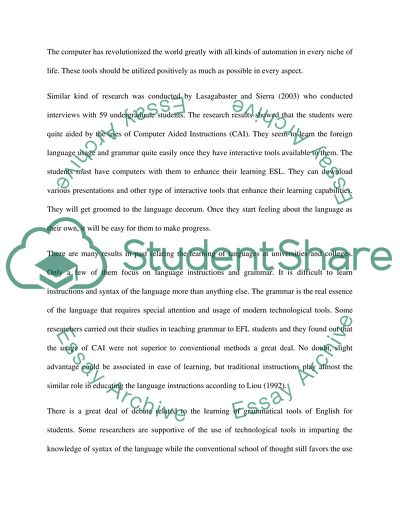Cite this document
(“The role of technology in EFL classroom Literature review”, n.d.)
The role of technology in EFL classroom Literature review. Retrieved from https://studentshare.org/english/1629467-the-role-of-technology-in-efl-classroom
The role of technology in EFL classroom Literature review. Retrieved from https://studentshare.org/english/1629467-the-role-of-technology-in-efl-classroom
(The Role of Technology in EFL Classroom Literature Review)
The Role of Technology in EFL Classroom Literature Review. https://studentshare.org/english/1629467-the-role-of-technology-in-efl-classroom.
The Role of Technology in EFL Classroom Literature Review. https://studentshare.org/english/1629467-the-role-of-technology-in-efl-classroom.
“The Role of Technology in EFL Classroom Literature Review”, n.d. https://studentshare.org/english/1629467-the-role-of-technology-in-efl-classroom.


